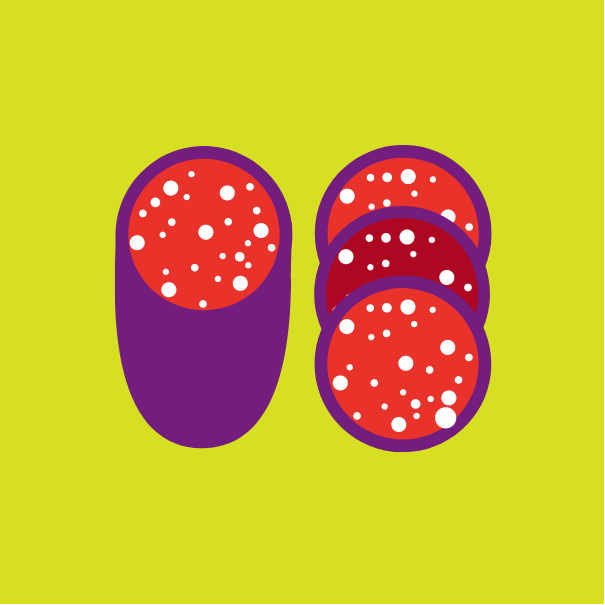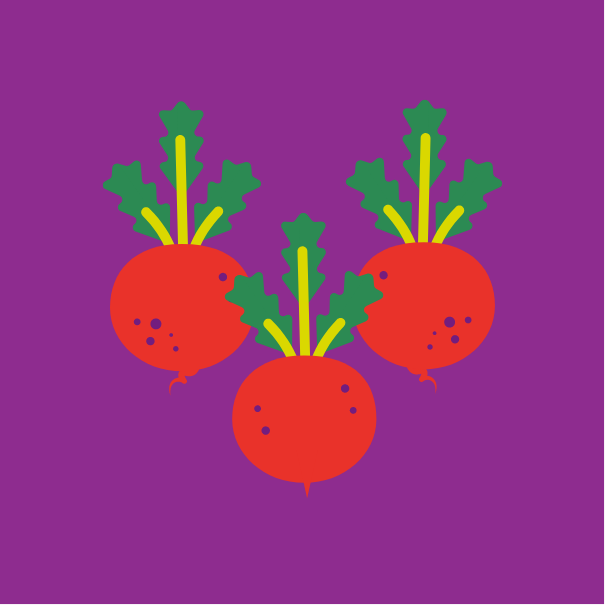by Andy Gricevich, Newsletter Writer
Glyphosate: history’s most heavily used agricultural chemical. More familiar to most of us as the main ingredient in Monsanto’s herbicide Roundup, glyphosate has found its way into our food, our water, and our bodies. The World Health Organization’s International Agency for Research on Cancer, however, announced in 2015 that glyphosate is “probably carcinogenic to humans.” That decision took into account the many studies, over decades, that linked the chemical to an array of serious health problems. Though the maker of glyphosate has always claimed that its products, if used as instructed, pose no serious risks to humans or the environment (a claim maintained by its new owner, the German pharmaceutical company Bayer), litigation (8,000 or so lawsuits against the agrochemical giant) has brought out internal documents showing that the company has long been aware of the risks, and has engaged in all kinds of unsavory tactics to keep them under wraps.
What is glyphosate? How did it become so omnipresent? What can we do to limit our exposure, and to increase our resilience? If food is the main way herbicides get into our bodies, will eating organically guarantee us a clean diet? If so, is it enough?
A BRIEF HISTORY OF GLYPHOSATE
We don’t have space to go into the scientific details of glyphosate’s composition. As a chelator (bonding strongly with minerals), it first hit the market as a descaler for plumbing. In the late 1960s, Monsanto scientists discovered its effectiveness as a weed-killer. They added a surfactant to help it penetrate the internal tissues of plants, working down to the roots, inhibiting an enzyme crucial for building new cells and killing the plants within days. Roundup was born.
It was a massive hit upon its release in 1974. Roundup was more broadly effective than its predecessors, and, according to Monsanto, much safer. Its success was good news for the company, which was working to keep business booming in the wake of lawsuits over the concealment of the dangers of PCBs and DDT. By 1995, 40 million pounds of glyphosate were in use.
In 1996, Monsanto unveiled another scientific miracle. In the sludge ponds surrounding one of their Louisiana production plants, company scientists had discovered a bacterium that could survive contact with glyphosate, and found that inserting its genetic material into the DNA of a soybean made the plant resistant as well. For the first time, an herbicide could be sprayed directly onto fields in any season, killing everything but the desirable crop plants. With the introduction of “Roundup-ready” crops to the world seed market—just in time for the 2000 expiration of the Roundup patent—annual glyphosate use grew, reaching 276 million pounds in 2014.
Monsanto even encouraged grain growers to directly spray non-resistant wheat and barley at harvest time. Glyphosate quickly ripens and dries (desiccates) grain that otherwise has to be left in the field for days, exposing it to the risk of mold from late fall weather. It’s also used to desiccate lentils and chickpeas, and to increase the sucrose content of sugar beets. The company made major donations to groups like the Nature Conservancy as well, encouraging their use of Roundup to treat invasive plants. As usage spread and profits soared, the maker of glyphosate celebrated its success in “feeding the world.” Scientific studies, though, were sounding alarms.
RISKS AND REGULATIONS
For decades, scientists have found strong correlations between glyphosate exposure and a suite of health concerns. The biggest is non-Hodgkin’s lymphoma, a virulent form of cancer. Glyphosate is also a suspected endocrine disruptor, and has been linked to birth defects and reproductive disorders. It kills beneficial bacteria, opening up habitat for harmful microbes, wreaking havoc on our microbiome (just like the soil’s) and probably thereby contributing to food allergies and childhood autism. Though Monsanto has dismissed every critical evaluation as “junk science,” there’s ample data pointing to glyphosate’s toxicity. Research also indicates that the combination of chemicals in herbicides powerfully increases the volatility of each component, and that the forms glyphosate takes as it breaks down are even deadlier than the original.
Government agencies have done little to staunch the flow of glyphosate. The Environmental Protection Agency, the U.S. Department of Agriculture, and the Food and Drug Administration have always had close ties to the agrochemical industry. Companies like Monsanto and Dow Chemical pressure the agencies to green-light their products and suppress critical data. The EPA has hardly studied glyphosate at all. Its only review of data, in 1985, came up with an assessment of possible risk, but, subjected to a slew of Monsanto-produced studies and a good deal of political pressure, it revised its judgment, six years later, to “evidence of non-carcinogencity to humans.” The USDA doesn’t test for glyphosate in foods, and has repeatedly failed to conduct required environmental impact studies before approving and deregulating Roundup-ready products.
Despite all this negligence, the end of glyphosate is likely around the corner. National governments are enacting bans, while sprayed fields are being overrun by glyphosate-resistant “superweeds,” large and strong enough to break agricultural equipment. Whatever the fate of glyphosate, though, and whatever comes next, this chemical has been used so heavily that we may have to deal with its presence for some time.
GLYPHOSATE AND ORGANICS
For those of us who don’t work directly with herbicides, diet is the most critical factor in mitigating glyphosate exposure. USDA Organic standards prohibit the use of synthetic chemicals, and inspectors run annual tests to ensure compliance. Most scientists concerned about glyphosate suggest eating organic as the most important choice for health. Members of the nonprofit Moms Across America, having found glyphosate residues in their own breast milk and urine, as well as in popular breakfast cereals, witnessed the rapid disappearance of their children’s food allergies and autistic symptoms after changing their diets.
In the current environment, though, there are no absolute guarantees of purity. Some organic farmers have to negotiate with neighbors who spray Roundup widely, with no regard for wind speed and direction. They try to prevent contamination by planting buffer zones and windbreaks to prevent herbicidal drift.
Beekeepers face a harder challenge. Many apiaries are located near GMO cropland. Bees travel within a two-to-four mile radius to forage, feeding on the flowers of sprayed crops. Labs have found significant glyphosate residues in 45% of organic honey tested, and there’s no federal standard regulating herbicides in honey. Glyphosate is also widely considered one of the biggest killers of pollinators.
The USDA actually permits small percentages of chemical residues in organic foods. The allowable quantities are calculated as a small percentage of the EPA’s general limits, which not only vary from crop to crop, but are blurry with regard to glyphosate (for which the EPA has repeatedly raised allowable levels as its use has increased). Nonetheless, organic fruits and vegetables tend to come out clean when tested, as do foods from animals living on uncorrupted pasture land and supplemented with glyphosate-free feed.
Grain is a bigger challenge. Multiple tests over the last few years have found glyphosate in organic grains at percentages alarmingly close to those found in herbicide-dessicated conventional product. The contamination might be the result of drift from adjacent farms, of residues in the soil (which one figure claims can persist for up to twenty years, much longer than the three required for organic certification), or of contact with corrupted product in processing facilities. The grain tested mostly comes from the big growing regions (Montana, the Dakotas, and western Canada), and barley, oats and wheat have shown the highest percentages (they also have the highest EPA allowances).
That’s bad news for those of us who want to eat bread and drink beer (or wine, which, even when made from organic grapes, has also shown traces). It’s not hopeless, though. Here in Wisconsin we’re lucky to have companies like Lonesome Stone Milling, which works exclusively with small-scale regional growers (and is also the main supplier for Madison Sourdough). At least one customer has had LSM’s product tested, and it came out pure. Though it’s still currently too expensive for most businesses to test all of their product and guarantee it glyphosate-free, it’s encouraging that there are companies setting that as a goal—and the tests are getting better and cheaper. The biggest advantage to buying organic food from local producers, though, is traceability; you can find out a good deal about the land where your food was grown.
We can strengthen our resilience by adding particular nutrients to our diet. Sulfur (which glyphosate depletes) breaks down damaged proteins whose accumulation promotes cancer growth, and helps remove heavy metals and boost glutathione, an important antioxidant. Eggs, onions, garlic and cheese are good sulfur sources; we synthesize crucial sulfates with the addition of cholesterol found in grass-fed dairy and meat. Glyphosate also bonds with manganese, which we need for gut health and cellular resilience (get it from tea, cloves, mussels, and molasses). Probiotics (especially from live vegetable ferments) can support our gut microbiome as well, and a diet rich in prebiotic fiber is essential.
Gut and liver support and detoxification are also aided by plants like dandelion, barberry and burdock root. Activated charcoal, bentonite clay, and humic and folic acid from soil all seem to help pull glyphosate out of our systems. The Co-op recently started carrying Restore, a soil-derived product with some very interesting potential for increased resilience and healing. Vitamin C and sunlight also help us protect our systems from chemical toxicity.
OUR ENVIRONMENT IS ALSO OUR DIET
We can minimize the effects of glyphosate via our dietary choices, and the more support we give to organic producers, the more clearly we show our preference for clean food. Given the resistance of government agencies to promoting a shift away from chemical-intensive agriculture, consumer choice is the greatest power we have to change our food system. Other sources of exposure, though, may call for different strategies.
The City of Madison and Dane County apply significant amounts of glyphosate-based herbicides to athletic fields, parks, sandboxes, sidewalks and lakes (information on Middleton’s use is harder to come by, though it’s clearly used in similar areas). Most of it involves spot-spraying at close range—but it’s still working its way into our soil and water. While both the city and conservation organizations tend to be pretty good about posting warnings, kids and pets are unlikely to read them before plunging into a sprayed colony. When it comes to private use, landscaping companies routinely spray around homes for “weeds,” and homeowners frequently use Roundup on their own lawns, directly exposing themselves, families, neighbors and animals, with no signage requirements.
If we think that the health risks of glyphosate outweigh the longing for a dandelion-free lawn, or even the need to keep garlic mustard from taking over prairies and forests, we need to voice our concerns. Madison dismantled its Pesticide Management Advisory Committee in 2013, a year after it passed legislation allowing licensed volunteers to spray in public spaces, and a year before deciding to significantly increase herbicide use. We can pressure the government to reverse that trend, and ask our mayors and city councils to establish relevant committees. We can talk to our neighbors about their spraying. We can get involved in neighborhood associations to organize voluntary bans, which could be the building blocks of a glyphosate-free city (it’s not far-fetched; Chicago has banned it in public places, and Vancouver in both public and private—though current Wisconsin law blocks communities from placing direct restrictions on herbicide use). We can volunteer with conservation organizations and try to move them toward less toxic options for controlling invasives, which certainly exist.
When our society allows new chemicals to permeate the environment without truly rigorous, independent study to prove their safety, we’re wagering that the consequences won’t be severe or irreversible. History hasn’t shown that to be a good bet. Perhaps the near-invisibility of such chemicals makes it easy enough for us to ignore them. Perhaps a wish for “experts” to provide security in a confusing world keeps us from asking too many questions. Hopefully, this article has provided some starting points for you to do your own research, and to live out the freedom that still remains to decide what we want in our environment, which makes up our very bodily being; which we make and remake through our own choices; in which each participant is utterly dependent on the well-being of the others.









